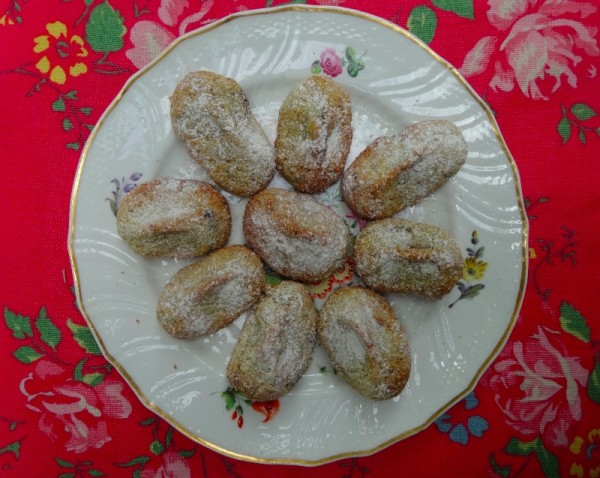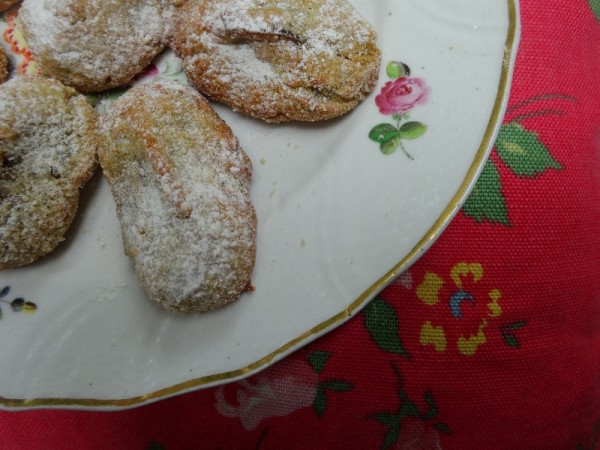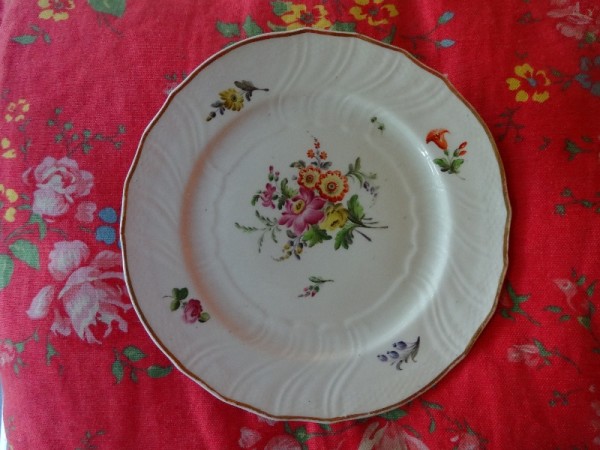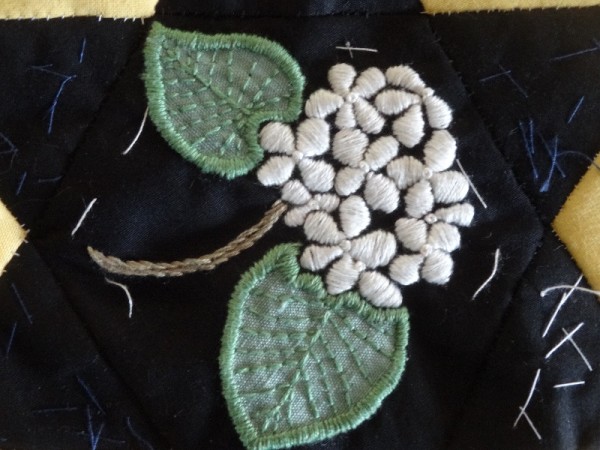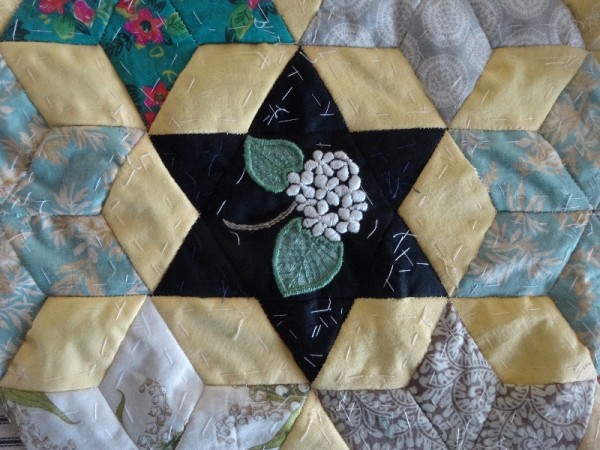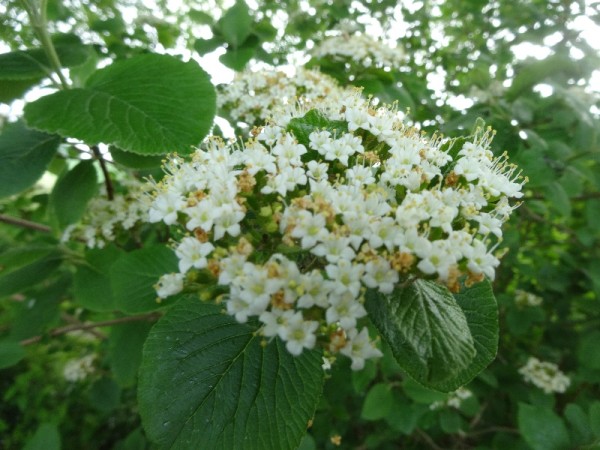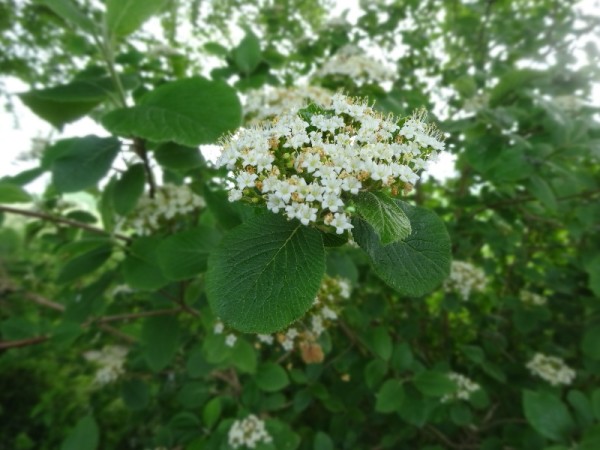Although the vicar has formally retired, we do have people dropping in to say final goodbyes, so the church biscuit is still nice to have to offer. I was going to make Nigella’s Pistachio Crescents (from How to Eat, Chatto and Windus, 1999) but after a recent problem with another of her biscuit recipes (of which more in a future post), I decided to take the pistachio idea and marry it with an Ottolenghi recipe for Sour Cherry Amaretti which were fantastic when I made them previously. Ottolenghi’s recipe calls for lemon zest but (exactly as happened before) the vicarage kitchen didn’t have a decent lemon, so – also as before – I turned to a little chopped mixed peel. Of thee 180 g of ground nuts required by the recipe, I used 100g pistachios, to 80g ground almonds. (I ground the pistachios in a well-cleaned coffee grinder). The pistachio flavour was paramount but you could play around with the relative proportions if the fancy took you.
Ingredients
100 g ground pistachios
80 g ground almonds
120 g golden caster sugar
1 teasp chopped mixed peel
60 g dried sour cherries
2 egg whites from large eggs
1 teasp of warmed honey
icing sugar to dust the amaretti both before and after cooking
Preheat the oven to 170° C/ 150 °C for a fan oven/325 ° F/gas mark 3
Line 2 baking trays with baking parchment.
Put the ground almonds, caster sugar and chopped mixed peel in a bowl and mix together. Add the sour cherries. (You could chop these more, I left them halved.)
In another bowl whisk up the egg whites and the honey until soft peaks. Fold this mixture into the dry ingredients in the other bowl until a paste forms. Gather into a ball (dusting hands with ground almonds if sticky).
Pinch off walnut sized pieces of the paste, roll them into sausages and drop them in a bowl of sifted icing sugar. Put them on a baking sheet, flattening them slightly and pinching the top into a ridge.
Bake for 12-15 minutes, turning the trays around half way through to cook evenly.
Remove from oven and place on a wire rack to cool. While still hot, sift a little more icing sugar over them.
Makes about 30 little amaretti. Superb.
The cat came in with a non-fledged blue tit, so she received the eye contact of displeasure and the turned back treatment of disapproval (practising for the toddler).
Empathy for blue tits is high as we are still recovering from last week’s Spring watch where a mother blue tit, having successfully reared a nest full of 4 great tit chicks to near fledging standard came home to find 3 missing – picked off by an observant jay as they poked their heads out of their nesting box preparatory to their first flight. (Please don’t ask why she was rearing great tit chicks – possibly a cuckoo thing – the more we seem to discover about the wild world the more complicated it seems to be!). The final chick retreated to the top of the nesting box in a state of some stress. Having just seen the spring’s final episode, I can happily revealed No 4 is still alive.
Possibly even worse was the stoat attack on the woodpecker’s nest, where a mother stoat climbedsome 30′ up a tree, disappeared into a hole in the tree and reappeared with, one by one, the 3 – or was it 4 – chicks.
We were relieved that this year the owls are doing better and – so far – have more food, so that as yet no owl chick has been edged into starvation and ultimately the subject of cannibalism by its stronger siblings.

